The Importance of Building Math Skills Early
Establishing strong math skills at an early age is vital for a child’s overall academic success. Early exposure to mathematical concepts helps children develop critical thinking, problem-solving abilities, and logical reasoning. Research shows that a solid foundation in math during the early years often leads to higher achievement levels in school. Our online Grade 3 math tutoring service at Noble Learners is designed to cultivate these important skills and set your child on a path to success.
Why Opt for an Online Math Tutor?
Online tutoring offers a modern, accessible, and efficient way to enhance your child’s education. By choosing online tutoring, you gain access to expert instruction from the comfort of your home, without the hassle of commuting. Our platform at Noble Learners is crafted to provide an engaging and interactive learning experience, keeping your child interested and eager to learn.
Advantages of Choosing Indian Tutors for USA Students
Indian tutors are widely recognized for their exceptional math abilities and educational expertise. When you choose an Indian tutor, your child benefits from high-quality education, personalized guidance, and innovative teaching techniques tailored to their individual learning needs. At Noble Learners, our tutors are committed to helping students in the USA excel in math by offering focused, one-on-one instruction.
-
Expert Tutors From India
Noble Learners has a team of expert tutors who are well-qualified and have a lot of experience. They are teaching many students in the US and are experts in the US Syllabus. Best Online Tutoring for USA from India.
-
One-One-Tutoring
Noble Learners believe in personal attention for every student. Every student needs a personal mentor who can help them to achieve their goals. With Noble Learners many students have achieved their dreams by scoring good grades in exams.
-
Flexible Timings
We provide flexible timings for our students, they can choose a slot as per their availability. Our tutors will be ready to take classes at that time.
-
Live Sessions Via Zoom
We believe in one-to-one live sessions for each of my students. Like others, we do not make and offer a pre-recorded course. We believe that students have the right to solve their doubts at the same time. Our Maths Tutors from India for the USA are highly professional and knowledgeable, who take every doubt of a student into account and try to solve them.
-
Free Demo (30-Minutes)
Every student has the right to decide before joining any tutoring as this is one of the most important decisions of their life. A good tutor at present can shape your future in higher education. Deciding a tutor is not an easy task, it is as important as opting for health insurance in the US. We give you the right to determine. Before starting your tutoring journey with us, you can take a free demo for 30 minutes.
-
More than 50 teachers to choose from
We believe in the availability of options, our platform has more than 50 tutors to choose from. We try our best to offer a perfect match to every student as per their requirement. However, if one is not satisfied with the demo, one can take another demo from another expert. It should be noted that only two demos are free and one has to pay for other demo classes.
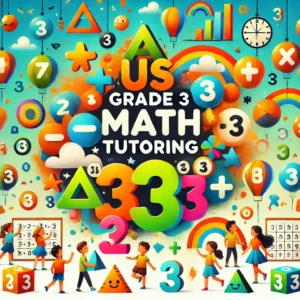
About Our Tutoring Service
Who We Are
We are a team of dedicated math educators from India, specializing in teaching Grade 3 math to students in the USA. At Noble Learners, our tutors are not only highly qualified but also deeply passionate about teaching. We are driven by a commitment to helping each student succeed in math and develop a love for learning.
Our Mission and Vision
Our mission at Noble Learners is to provide top-tier, personalized math tutoring that empowers students to build a strong mathematical foundation. We envision a future where every child has the confidence and skills needed to excel in math, setting them on a path to academic achievement and lifelong success.
Our Teaching Philosophy
We embrace a student-centered approach, where the individual needs and learning styles of each child are prioritized. Our tutors employ a variety of teaching strategies and tools to make math enjoyable and accessible, ensuring that students not only understand mathematical concepts but also find joy in learning.
Schedule a Free Demo Today
Why Choose Our Tutors?
Expert Tutors
Our team is comprised of expert tutors with extensive experience in teaching math to elementary students. Each tutor holds advanced degrees in education and mathematics and is knowledgeable in the most effective teaching methodologies.
Customized Learning Plans
At Noble Learners, we recognize that every child learns differently. That’s why we create customized learning plans that cater to each student’s unique strengths and areas for improvement. This personalized approach enables students to grasp concepts more thoroughly and achieve better academic outcomes.
Convenient Scheduling
We offer flexible scheduling options to fit your family’s busy lifestyle. Whether you need morning, afternoon, or evening sessions, our tutors are available to accommodate your needs. This flexibility ensures that your child can receive the support they need without disrupting your daily routine.
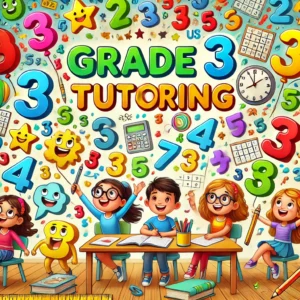
Curriculum and Teaching Methods
Aligned with US Common Core Standards
At Noble Learners, our curriculum is meticulously designed to align with the US Common Core Standards, ensuring that your child receives a math education that meets national benchmarks. This alignment is crucial for keeping students on par with their peers, setting them up for success in both current and future academic endeavors.
Interactive and Engaging Lessons
We believe that learning math should be both enjoyable and effective. Our interactive and engaging lessons utilize a variety of tools and techniques, including educational games, puzzles, and real-life examples, to make math concepts easy to understand and fun to explore. This approach keeps students motivated and helps them see the relevance of math in everyday life.
Regular Assessments and Personalized Feedback
To ensure your child’s continuous improvement, we conduct regular assessments that track their progress and pinpoint areas for enhancement. Our tutors provide personalized feedback after each assessment, helping students understand their mistakes and learn from them. This ongoing evaluation process is key to building a strong foundation in math and achieving long-term success.
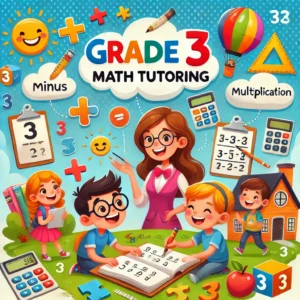
Grade-3 Math Lesson Plan
Noble Learners - Grade 3 Math Curriculum
Website: www.noblelearners.in
Chapter 1: Numbers and Operations in Base Ten
Lesson 1.1: Counting and Writing Numbers to 1000
- Counting from 1 to 1000
- Writing numbers from 1 to 1000
- Practice with number recognition and sequencing
Lesson 1.2: Understanding Place Value
- Understanding hundreds, tens, and ones
- Building numbers using place value blocks
- Practice with place value identification
Lesson 1.3: Comparing Numbers
- Greater than, less than, and equal to
- Comparing numbers using place value
- Practice with comparison problems
Lesson 1.4: Rounding Numbers
- Rounding to the nearest ten
- Rounding to the nearest hundred
- Practice with rounding problems
Lesson 1.5: Adding and Subtracting within 1000
- Adding numbers within 1000 using regrouping
- Subtracting numbers within 1000 using regrouping
- Practice with addition and subtraction problems
Chapter 2: Multiplication and Division
Lesson 2.1: Introduction to Multiplication
- Understanding multiplication as repeated addition
- Multiplication facts for 2s, 5s, and 10s
- Practice with simple multiplication problems
Lesson 2.2: Introduction to Division
- Understanding division as sharing equally
- Division facts for 2s, 5s, and 10s
- Practice with simple division problems
Lesson 2.3: Multiplying and Dividing within 100
- Multiplying numbers within 100 using arrays and groups
- Dividing numbers within 100 using repeated subtraction
- Practice with multiplication and division problems
Lesson 2.4: Solving Word Problems Involving Multiplication and Division
- Using multiplication and division to solve word problems
- Real-life scenarios for problem-solving
- Practice with word problems
Lesson 2.5: Understanding the Relationship between Multiplication and Division
- Exploring how multiplication and division are related
- Fact families in multiplication and division
- Practice with related facts
Chapter 3: Fractions
Lesson 3.1: Understanding Fractions
- Introduction to fractions as parts of a whole
- Identifying halves, thirds, and quarters
- Practice with simple fraction problems
Lesson 3.2: Comparing Fractions
- Comparing fractions with the same denominator
- Comparing fractions with different denominators
- Practice with fraction comparison
Lesson 3.3: Understanding Equivalent Fractions
- Identifying and generating equivalent fractions
- Using visual models to understand equivalent fractions
- Practice with equivalent fraction problems
Lesson 3.4: Adding and Subtracting Fractions
- Adding fractions with the same denominator
- Subtracting fractions with the same denominator
- Practice with fraction addition and subtraction
Chapter 4: Measurement and Data
Lesson 4.1: Measuring Length
- Using standard units (inches, feet, centimeters, meters) to measure length
- Comparing lengths of objects
- Practice with measurement problems
Lesson 4.2: Telling Time
- Understanding the clock face and hands
- Telling time to the nearest minute
- Practice with telling time
Lesson 4.3: Measuring Weight and Volume
- Understanding units of weight (grams, kilograms) and volume (liters, milliliters)
- Measuring and comparing weight and volume
- Practice with weight and volume measurement
Lesson 4.4: Collecting and Organizing Data
- Collecting data through surveys and observations
- Representing data using charts and graphs
- Practice with interpreting data
Chapter 5: Geometry
Lesson 5.1: Identifying Shapes
- Recognizing and naming basic shapes (circle, square, triangle, rectangle, pentagon, hexagon)
- Identifying shapes in the environment
- Practice with shape recognition
Lesson 5.2: Understanding Area and Perimeter
- Calculating the area of rectangles using multiplication
- Calculating the perimeter of various shapes
- Practice with area and perimeter problems
Lesson 5.3: Understanding Symmetry
- Identifying lines of symmetry in various shapes
- Creating symmetrical shapes and patterns
- Practice with symmetry problems
Lesson 5.4: Understanding Spatial Relationships
- Using positional words (above, below, beside, in front of, behind, next to)
- Understanding and applying concepts of direction and position
- Practice with spatial relationship problems
Chapter 6: Patterns and Sequences
Lesson 6.1: Recognizing Patterns
- Identifying and describing simple patterns
- Creating and extending patterns
- Practice with pattern recognition
Lesson 6.2: Understanding Sequences
- Recognizing and creating number sequences
- Understanding arithmetic sequences
- Practice with sequences
Chapter 7: Problem Solving and Critical Thinking
Lesson 7.1: Solving Math Problems
- Understanding problem-solving strategies
- Practice with a variety of math problems
Lesson 7.2: Critical Thinking
- Developing critical thinking skills through math puzzles and games
- Practice with logic and reasoning problems
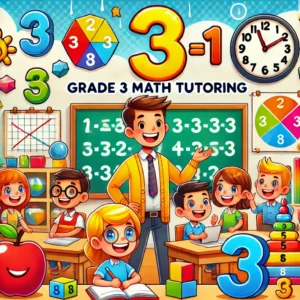
Noble Learners - Grade 3 Math Questions
Website: www.noblelearners.in
Chapter 1: Numbers and Operations in Base Ten
Lesson 1.1: Counting and Writing Numbers to 1000
- Write the number that comes after 589.
- What number is 10 more than 234?
- Count by tens starting from 120. What is the 5th number?
- Write the numbers from 830 to 840.
- Fill in the missing numbers: 451, ___, 453, ___, 455.
Lesson 1.2: Understanding Place Value
- What is the value of the digit 7 in the number 472?
- Which digit is in the hundreds place in the number 895?
- Write the number: four hundred sixty-three.
- Break down the number 356 into hundreds, tens, and ones.
- What is 10 more than the number 675?
Lesson 1.3: Comparing Numbers
- Which is greater: 546 or 564?
- Compare the numbers using >, <, or =: 789 ___ 798.
- Arrange these numbers in ascending order: 324, 432, 423, 234.
- Which number is less: 832 or 823?
- Fill in the blank: 672 ___ 670.
Lesson 1.4: Rounding Numbers
- Round 362 to the nearest ten.
- What is 524 rounded to the nearest hundred?
- Round 298 to the nearest hundred.
- Which is closer to 700: 684 or 716?
- Round 149 to the nearest ten.
Lesson 1.5: Adding and Subtracting within 1000
- Add: 345 + 276 = ?
- Subtract: 910 - 354 = ?
- Find the sum: 623 + 298 = ?
- What is 702 - 489?
- Solve: 500 + 289 = ?
Chapter 2: Multiplication and Division
Lesson 2.1: Introduction to Multiplication
- What is 3 times 4?
- If you have 5 groups of 2 apples, how many apples do you have in total?
- Complete the multiplication sentence: 2 × ___ = 10.
- Write the multiplication fact for adding 4 + 4 + 4.
- Solve: 7 × 5 = ?
Lesson 2.2: Introduction to Division
- Divide 20 by 5. What is the quotient?
- If you share 18 candies equally among 6 friends, how many candies does each friend get?
- Solve: 30 ÷ 6 = ?
- Complete the division sentence: ___ ÷ 3 = 7.
- Divide 12 by 4.
Lesson 2.3: Multiplying and Dividing within 100
- What is 8 × 9?
- Solve: 72 ÷ 8 = ?
- Find the product: 6 × 7 = ?
- What is the quotient of 81 ÷ 9?
- Solve: 4 × 8 = ?
Lesson 2.4: Solving Word Problems Involving Multiplication and Division
- Susan has 3 baskets. Each basket has 6 apples. How many apples does she have in total?
- If there are 24 students and each group has 4 students, how many groups can be formed?
- A pack contains 5 pencils. How many pencils are there in 7 packs?
- Tom has 36 marbles. He wants to divide them equally among his 9 friends. How many marbles will each friend get?
- There are 8 rows of chairs with 10 chairs in each row. How many chairs are there altogether?
Lesson 2.5: Understanding the Relationship between Multiplication and Division
- If 3 × 4 = 12, what is 12 ÷ 4?
- Complete the fact family: 5 × 6 = 30, 6 × 5 = 30, ___ ÷ 5 = 6, ___ ÷ 6 = 5.
- Fill in the blank: 8 × ___ = 32 and 32 ÷ 8 = ___.
- Write two multiplication and two division sentences for 9, 3, and 27.
- Solve: 7 × 3 = 21, so 21 ÷ 7 = ___.
Chapter 3: Fractions
Lesson 3.1: Understanding Fractions
- What fraction of a pizza is left if 1 out of 4 equal pieces is eaten?
- Color 1/2 of the following shape.
- Which is greater: 1/3 or 1/2?
- How many quarters make up one whole?
- If you divide a candy bar into 3 equal parts, what fraction is each part?
Lesson 3.2: Comparing Fractions
- Which is larger: 3/4 or 2/4?
- Compare the fractions using >, <, or =: 1/2 ___ 1/3.
- Order the fractions from least to greatest: 2/3, 1/3, 3/3.
- Which is smaller: 3/5 or 4/5?
- Fill in the blank: 1/4 ___ 3/4.
Lesson 3.3: Understanding Equivalent Fractions
- What is an equivalent fraction to 2/4?
- Fill in the blank: 1/2 = ___/4.
- Which fraction is equivalent to 3/6: 1/2 or 2/3?
- Simplify the fraction 4/8.
- Are the fractions 3/9 and 1/3 equivalent? (Yes or No)
Lesson 3.4: Adding and Subtracting Fractions
- Add: 1/4 + 2/4 = ?
- Subtract: 3/5 - 1/5 = ?
- Solve: 2/6 + 3/6 = ?
- What is 5/8 - 2/8?
- Add: 1/3 + 1/3 = ?
Chapter 4: Measurement and Data
Lesson 4.1: Measuring Length
- How many centimeters are in 1 meter?
- Measure the length of your pencil in inches.
- Which is longer: 12 inches or 1 foot?
- If a table is 4 feet long, how many inches is that?
- Measure the height of a book in centimeters.
Lesson 4.2: Telling Time
- What time is it if the hour hand is on 3 and the minute hand is on 12?
- If it is 7:15 now, what time will it be in 30 minutes?
- Write the time: The hour hand is on 9 and the minute hand is on 6.
- How many minutes are there in one hour?
- If school starts at 8:30 AM and ends at 3:00 PM, how long is the school day?
Lesson 4.3: Measuring Weight and Volume
- Which is heavier: 1 kilogram or 500 grams?
- Measure the weight of an apple in grams.
- If a bottle holds 1 liter of water, how many milliliters is that?
- Estimate the weight of a book in kilograms.
- How many liters are in 3,000 milliliters?
Lesson 4.4: Collecting and Organizing Data
- Conduct a survey of your classmates' favorite fruits. How many chose apples?
- Create a bar graph to represent the data from your survey.
- How many more students like oranges than bananas?
- Interpret the data: Which fruit is the least popular?
- What is the total number of students who participated in the survey?
Chapter 5: Geometry
Lesson 5.1: Identifying Shapes
- Name the shape with 4 equal sides and 4 right angles.
- How many sides does a hexagon have?
- Which shape is round and has no sides?
- Draw a triangle.
- Identify the shape that has 5 sides.
Lesson 5.2: Understanding Area and Perimeter
- What is the area of a rectangle that is 4 units long and 3 units wide?
- Calculate the perimeter of a square with sides of 5 units.
- If a rectangle has a length of 7 units and a width of 2 units, what is its area?
- What is the perimeter of a rectangle with a length of 6 units and a width of 4 units?
- Solve: Area = length × width. Find the area of a rectangle with length 8 units and width 3 units.
Lesson 5.3: Understanding Symmetry
- Draw a line of symmetry through a square.
- Is a circle symmetrical? (Yes or No)
- Which of these shapes has more than one line of symmetry: rectangle, triangle, pentagon?
- Draw a symmetrical shape with two lines of symmetry.
- Identify the line of symmetry in the given shape.
Lesson 5.4: Understanding Spatial Relationships
- What is the position of the ball? Is it above or below the table?
- Place the book beside the pen. Which side is it on, left or right?
- Is the toy car in front of or behind the box?
- Identify the object that is next to the chair.
- Where is the pencil? Is it inside or outside the box?
Chapter 6: Patterns and Sequences
Lesson 6.1: Recognizing Patterns
- What comes next in the pattern: 2, 4, 6, 8, ___?
- Complete the pattern: Red, Blue, Red, Blue, ___.
- Identify the pattern: Circle, Square, Circle, Square, ___.
- What is the next number in the sequence: 10, 20, 30, ___?
- Fill in the blank: 1, 1, 2, 3, 5, ___.
Lesson 6.2: Understanding Sequences
- What is the next number in the sequence: 5, 10, 15, ___?
- Identify the rule in this sequence: 3, 6, 9, 12, ___.
- Find the missing number: 7, 14, ___, 28.
- What comes next in the sequence: 50, 45, 40, ___?
- Solve: 4, 8, 12, 16, ___.
Chapter 7: Problem Solving and Critical Thinking
Lesson 7.1: Solving Math Problems
- If you have 15 marbles and you give 7 to a friend, how many do you have left?
- What is the total cost if you buy 3 apples at $1 each and 2 bananas at $0.50 each?
- Solve: 5 + 3 - 2 = ?
- If a bus leaves the station at 9:15 AM and arrives at 10:00 AM, how long is the trip?
- If there are 12 cookies and you want to share them equally among 4 friends, how many cookies will each friend get?
Lesson 7.2: Critical Thinking
- If the pattern is 2, 4, 8, 16, what comes next?
- What is the opposite of adding 5?
- If a puzzle has 100 pieces and you have placed 75 pieces, how many are left?
- If you need 9 eggs for a recipe but have only 6, how many more do you need to buy?
- If you skip counting by 5, starting from 10, what number comes after 25?
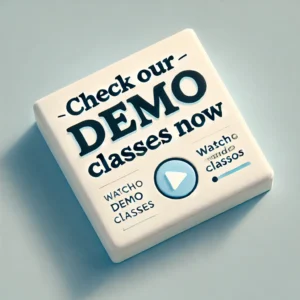
Grade 3 Math Quiz
1. What is the value of the digit 5 in the number 453?
a) 5
b) 50
c) 500
d) 5000
Correct Answer: b) 50
2. Round the number 678 to the nearest ten.
a) 670
b) 675
c) 680
d) 690
Correct Answer: c) 680
3. What is 542 + 276?
a) 818
b) 810
c) 812
d) 816
Correct Answer: c) 818
4. Which of the following fractions is equivalent to 1/2?
a) 2/4
b) 1/3
c) 3/6
d) 2/3
Correct Answer: a) 2/4
5. Which shape has exactly three sides?
a) Square
b) Rectangle
c) Triangle
d) Circle
Correct Answer: c) Triangle
6. If you have 3 groups of 4 apples, how many apples do you have in total?
a) 7
b) 10
c) 12
d) 15
Correct Answer: c) 12
7. What is 15 ÷ 3?
a) 3
b) 4
c) 5
d) 6
Correct Answer: c) 5
8. What is the perimeter of a square with sides of 6 units?
a) 18 units
b) 24 units
c) 30 units
d) 36 units
Correct Answer: b) 24 units
9. Which of the following is a line of symmetry?
a) Line that divides a circle into two equal halves
b) Line that passes through one corner of a square
c) Line that cuts a triangle into two equal parts
d) Line that goes through the center of a pentagon
Correct Answer: a) Line that divides a circle into two equal halves
10. Which of the following is the correct sequence: 2, 4, 6, ___?
a) 7
b) 8
c) 9
d) 10
Correct Answer: b) 8
11. What is the area of a rectangle that is 5 units long and 3 units wide?
a) 8 square units
b) 10 square units
c) 15 square units
d) 18 square units
Correct Answer: c) 15 square units
12. Which is larger: 1/3 or 1/2?
a) 1/3
b) 1/2
c) They are equal
d) Cannot be determined
Correct Answer: b) 1/2
13. What is 700 - 328?
a) 382
b) 372
c) 362
d) 352
Correct Answer: b) 372
14. What is 9 × 8?
a) 64
b) 72
c) 81
d) 96
Correct Answer: b) 72
15. What fraction represents the shaded part of a shape divided into 4 equal parts with 2 parts shaded?
a) 1/4
b) 2/4
c) 3/4
d) 4/4
Correct Answer: b) 2/4
16. If a clock shows the time as 3:15, what will the time be in 45 minutes?
a) 4:00
b) 4:15
c) 4:30
d) 5:00
Correct Answer: b) 4:00
17. What is the sum of the angles in a triangle?
a) 90 degrees
b) 180 degrees
c) 270 degrees
d) 360 degrees
Correct Answer: b) 180 degrees
18. If you have 15 marbles and you give 7 to a friend, how many do you have left?
a) 5
b) 7
c) 8
d) 9
Correct Answer: c) 8
19. What is the next number in the sequence: 10, 20, 30, ___?
a) 35
b) 40
c) 45
d) 50
Correct Answer: b) 40
20. How many sides does a pentagon have?
a) 4
b) 5
c) 6
d) 7
Correct Answer: b) 5
21. What is the product of 4 and 7?
a) 21
b) 24
c) 28
d) 32
Correct Answer: c) 28
22. Which fraction is equivalent to 3/6?
a) 1/2
b) 1/3
c) 2/3
d) 1/4
Correct Answer: a) 1/2
23. Which of these numbers is odd?
a) 6
b) 7
c) 8
d) 10
Correct Answer: b) 7
24. If a rectangle has a length of 7 units and a width of 4 units, what is its area?
a) 21 square units
b) 24 square units
c) 28 square units
d) 32 square units
Correct Answer: c) 28 square units
25. What is 36 ÷ 6?
a) 4
b) 5
c) 6
d) 7
Correct Answer: c) 6
26. How many quarters make up a dollar?
a) 2
b) 3
c) 4
d) 5
Correct Answer: c) 4
27. Which number is greater: 432 or 423?
a) 432
b) 423
c) They are equal
d) Cannot be determined
Correct Answer: a) 432
28. What is 25 × 4?
a) 50
b) 75
c) 100
d) 125
Correct Answer: c) 100
29. Which of the following is a unit of length?
a) Kilogram
b) Centimeter
c) Liter
d) Gram
Correct Answer: b) Centimeter
30. If it is 2:30 PM now, what will the time be in 2 hours?
a) 3:30 PM
b) 4:30 PM
c) 5:30 PM
d) 6:30 PM
Correct Answer: c) 4:30 PM
31. What is the smallest three-digit number?
a) 100
b) 101
c) 110
d) 111
Correct Answer: a) 100
32. How many sides does a hexagon have?
a) 4
b) 5
c) 6
d) 7
Correct Answer: c) 6
33. What is the perimeter of a rectangle with a length of 8 units and a width of 3 units?
a) 20 units
b) 22 units
c) 24 units
d) 26 units
Correct Answer: b) 22 units
34. What is the value of 4 quarters?
a) 50 cents
b) 75 cents
c) 100 cents
d) 125 cents
Correct Answer: c) 100 cents
35. What is 5 × 5?
a) 20
b) 25
c) 30
d) 35
Correct Answer: b) 25
36. Which number is even?
a) 5
b) 7
c) 8
d) 9
Correct Answer: c) 8
37. If you have 6 groups of 3 pencils each, how many pencils do you have in total?
a) 12
b) 15
c) 18
d) 20
Correct Answer: c) 18
38. What is the sum of 4 and 9?
a) 12
b) 13
c) 14
d) 15
Correct Answer: b) 13
39. How many sides does a triangle have?
a) 2
b) 3
c) 4
d) 5
Correct Answer: b) 3
40. What is 81 ÷ 9?
a) 8
b) 9
c) 10
d) 11
Correct Answer: b) 9
41. What is 14 - 9?
a) 3
b) 4
c) 5
d) 6
Correct Answer: c) 5
42. If a shape has 6 sides, what is it called?
a) Pentagon
b) Hexagon
c) Heptagon
d) Octagon
Correct Answer: b) Hexagon
43. What is the next number in the sequence: 5, 10, 15, ___?
a) 18
b) 20
c) 25
d) 30
Correct Answer: b) 20
44. What is 24 ÷ 3?
a) 6
b) 7
c) 8
d) 9
Correct Answer: c) 8
45. What is the value of 3 dimes?
a) 15 cents
b) 20 cents
c) 25 cents
d) 30 cents
Correct Answer: d) 30 cents
46. Which of these shapes is a rectangle?
a) Shape with 3 sides
b) Shape with 4 sides, opposite sides equal, all right angles
c) Shape with 5 sides
d) Shape with 6 sides
Correct Answer: b) Shape with 4 sides, opposite sides equal, all right angles
47. What is the product of 12 and 3?
a) 24
b) 30
c) 36
d) 42
Correct Answer: c) 36
48. What is 16 ÷ 4?
a) 3
b) 4
c) 5
d) 6
Correct Answer: b) 4
49. Which number is greater: 89 or 98?
a) 89
b) 98
c) They are equal
d) Cannot be determined
Correct Answer: b) 98
50. What is 5 × 7?
a) 30
b) 35
c) 40
d) 45
Correct Answer: b) 35
